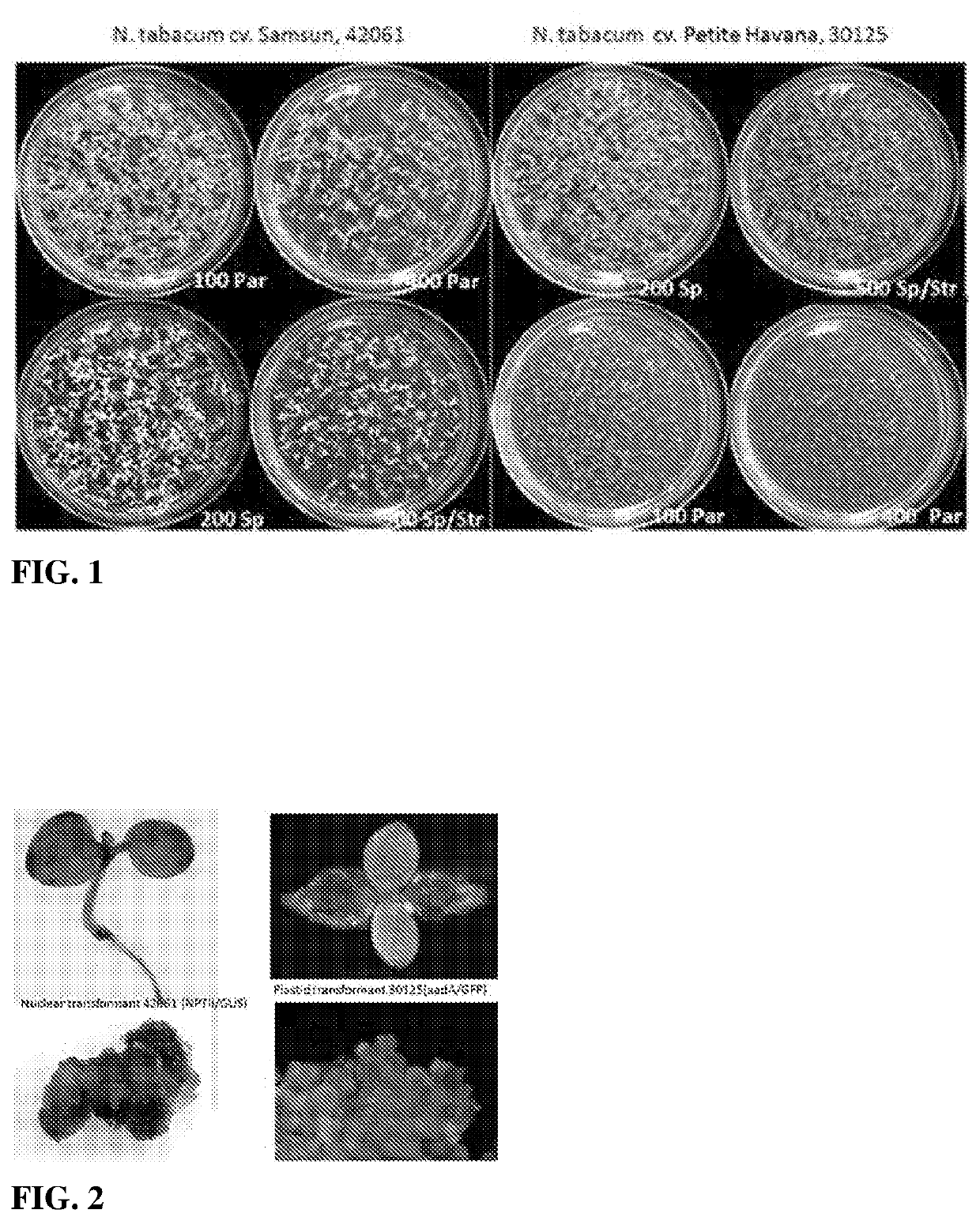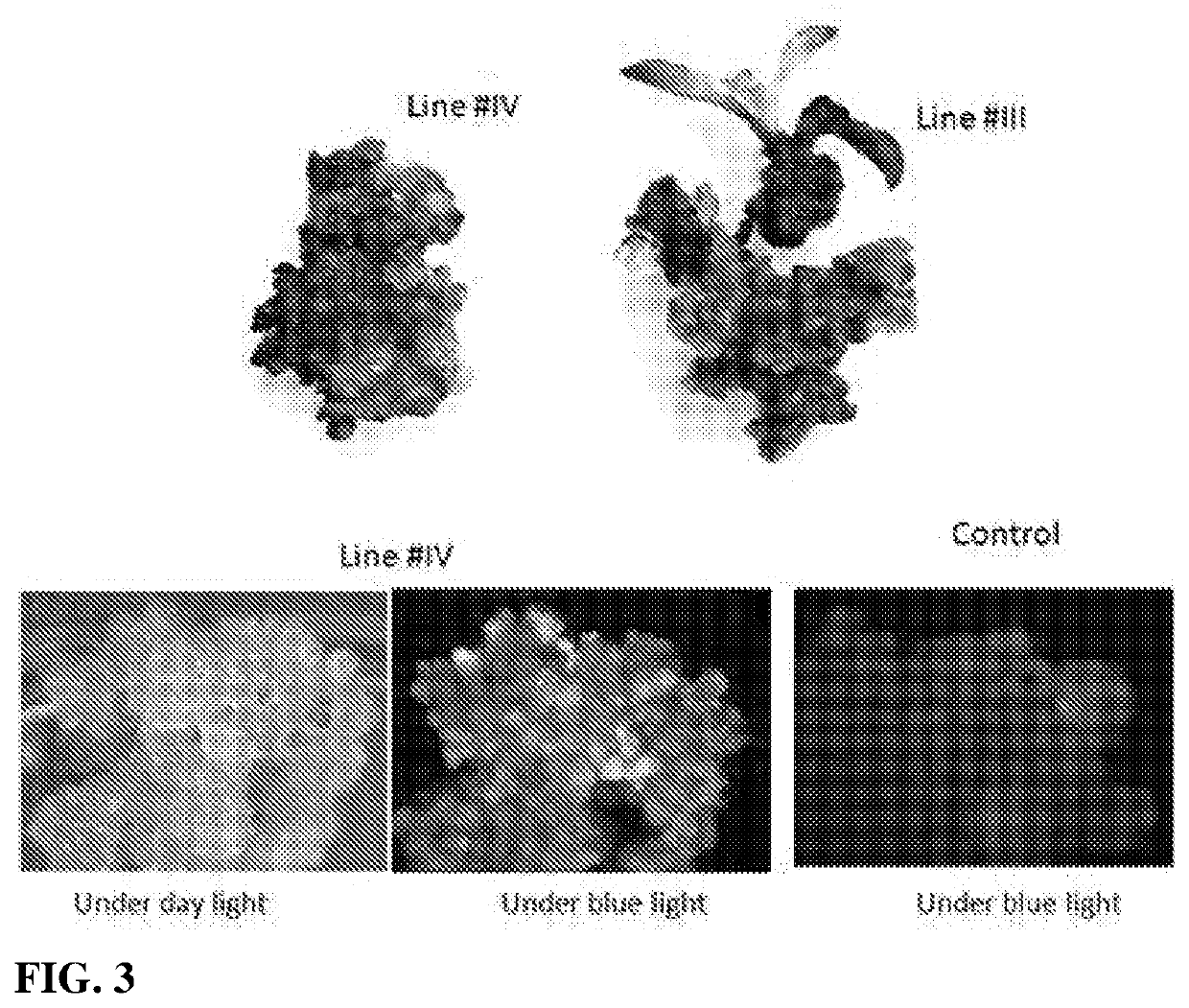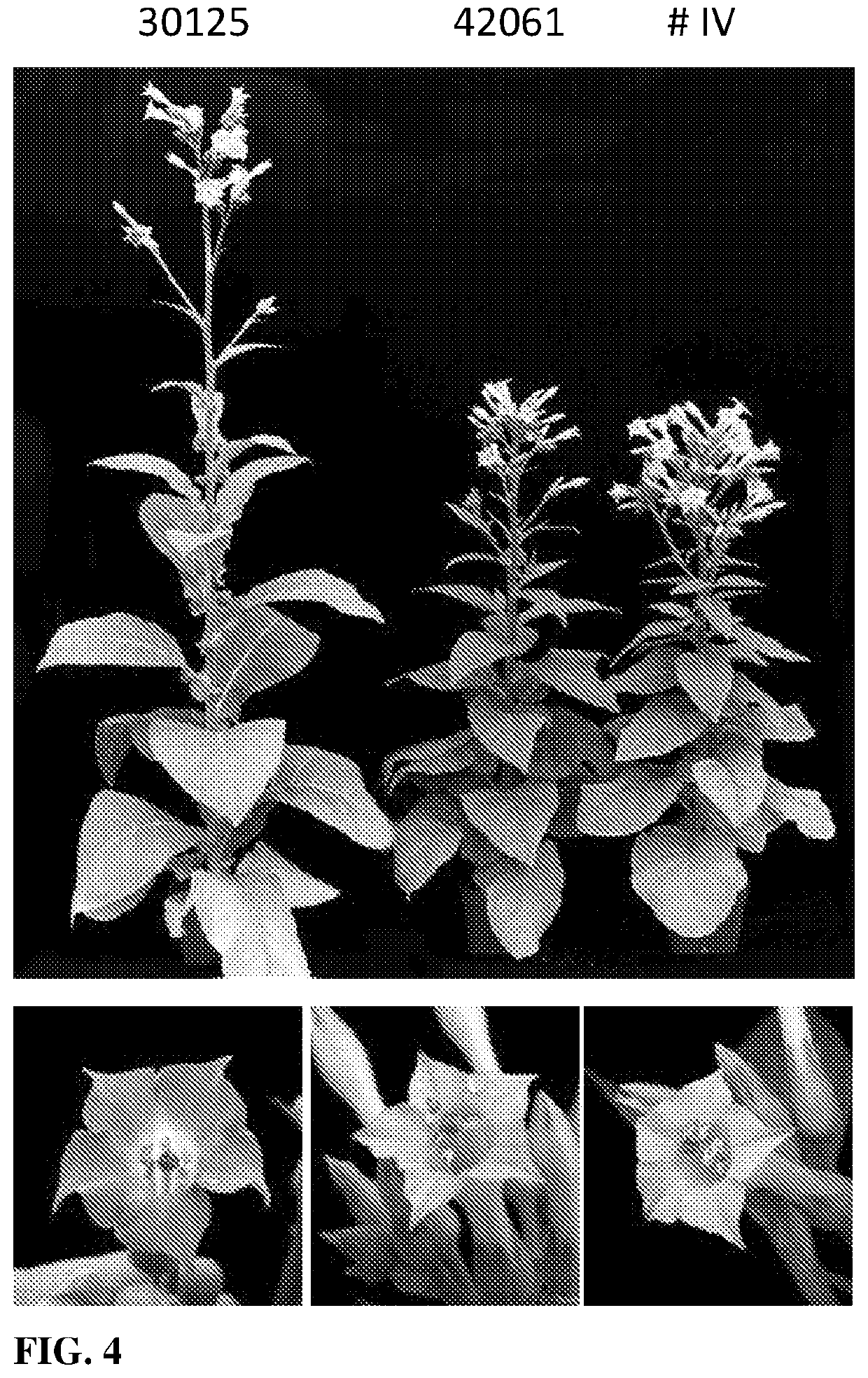Compositions and methods for transferring cytoplasmic or nuclear traits or components
a technology of cytoplasm and nuclear components, applied in the fields of plant biotechnology, molecular biology, agriculture, etc., can solve the problems of difficult regeneration of plants from protoplasts, difficult transformation of plant species and varieties, and many economically important plant species
- Summary
- Abstract
- Description
- Claims
- Application Information
AI Technical Summary
Benefits of technology
Problems solved by technology
Method used
Image
Examples
example 1
ransfer from a Donor Line to a Recipient Line in Tobacco by Cell Fusion
A. Establishment of Donor and Recipient Lines for Plastid Transfer
[0123]A plastid donor line Nicotiana tabacum var. Petit Havana (line #30125) was established as described (see Sidorov et al., Plant Journal, 19: 209-216, 1999) with a recombinant DNA construct in the plastid genome containing an aadA gene (conferring spectinomycin / streptomycin resistance) and a GFP marker gene.
[0124]A plastid recipient line N. tabacum var. Samsun (line #42061) was established by transforming its nuclear genome with a recombinant DNA construct in the nuclear genome containing an NPTII gene (conferring kanamycin or paromomycin resistance) and a GUS marker gene, via Agrobacterium-mediated transformation.
[0125]Seeds of plastid transformant line #30125 (aadA / GFP) and nuclear transformant line #42061 (NPTII / GUS) were germinated on media with the corresponding antibiotic selections and checked for expression of the resistance genes, i.e....
example 2
ene Transfer by Cell Transfer in Tobacco
[0136]Two transgenic tobacco plant lines were generated to demonstrate transfer of nuclear DNA by cell fusion in wounded mixed plant cell cultures. N. tabacum var. Samsun line #42061 was established by transforming its nuclear genome with a recombinant DNA construct comprising a NPTII gene (conferring Paromomycin resistance) and a GUS marker gene, and an EPSPS gene which provides resistance to glyphosate. N. tabacum var. Petit Havana line #138202 was established by transforming its nuclear genome with a recombinant DNA construct containing an aadA gene (conferring streptomycin and spectinomycin resistance), and both GFP and GUS marker genes.
[0137]Plants transformed with these transgenes were checked to confirm the expression of their corresponding resistance gene as shown in FIG. 11. Plants of line #138202 were checked for GFP expression as shown in FIG. 12. GFP was localized in nuclei and cytoplasm. Established plants were checked for the cor...
example 3
ene Transfer by Cell Wounding and Transfer in Corn
[0142]Transgenic corn line A was created having a recombinant DNA construct in its nuclear genome including, in the 5′ to 3′ direction, an enhanced CaMV 35S promoter with an HSP70 intron in the 5′ untranslated region, a nptII selectable marker gene flanked by lox sites, followed by a green fluorescent protein (GFP) gene (see, e.g., Zhang et al., Theor. Appl. Gen. 107(7): 1157-1168 (2003)). GFP is not functionally expressed due to the intervening nptII gene between the 35S promoter and the GFP coding sequence. However, in the presence of Cre recombinase enzyme, the nptII gene is excised due to the flanking lox sites, which results in high levels of GFP expression that can be visualized in most tissues by bringing the 35S promoter and the GFP coding sequence together. Embryogenic callus cells were generated from immature embryos of transgenic corn line A using methods known in the art (see, e.g., Sidorov and Duncan, Methods in Molecula...
PUM
| Property | Measurement | Unit |
|---|---|---|
| concentrations | aaaaa | aaaaa |
| pH | aaaaa | aaaaa |
| size | aaaaa | aaaaa |
Abstract
Description
Claims
Application Information
 Login to View More
Login to View More - R&D
- Intellectual Property
- Life Sciences
- Materials
- Tech Scout
- Unparalleled Data Quality
- Higher Quality Content
- 60% Fewer Hallucinations
Browse by: Latest US Patents, China's latest patents, Technical Efficacy Thesaurus, Application Domain, Technology Topic, Popular Technical Reports.
© 2025 PatSnap. All rights reserved.Legal|Privacy policy|Modern Slavery Act Transparency Statement|Sitemap|About US| Contact US: help@patsnap.com



